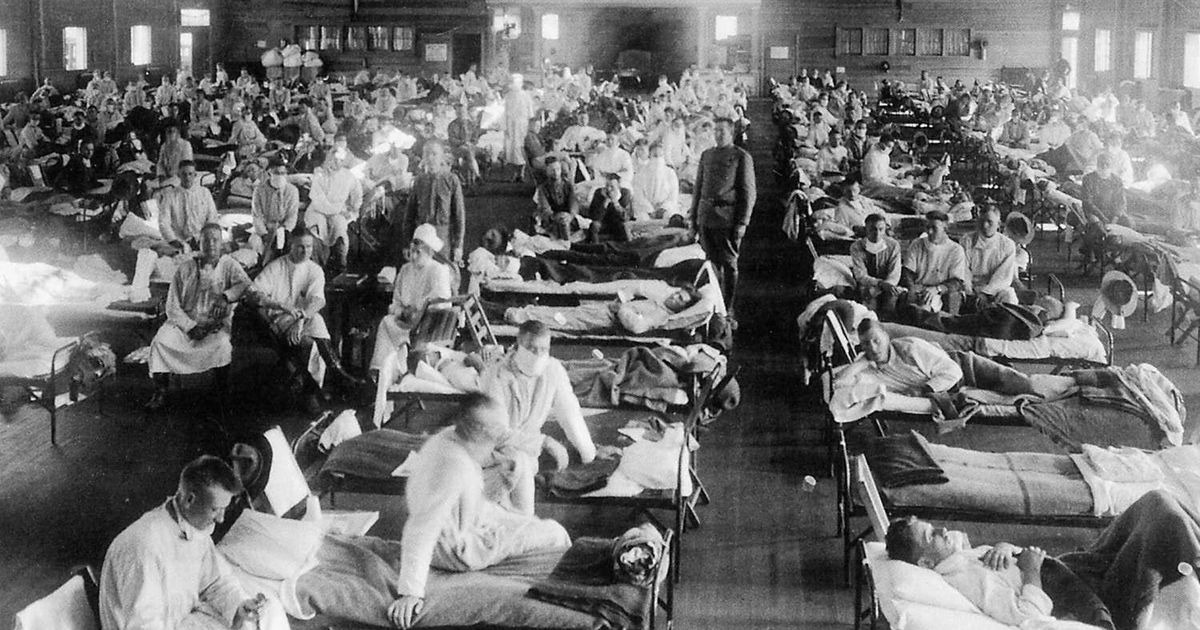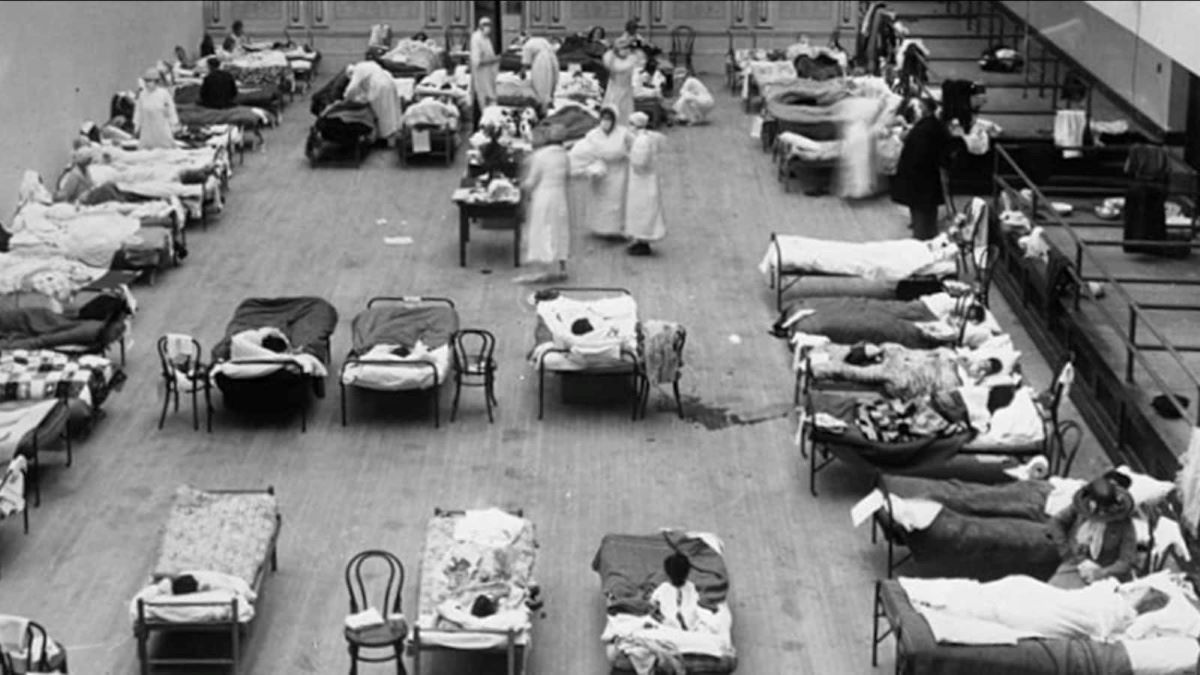Influenza, commonly known as the flu, is a highly contagious viral infection that has affected humanity throughout history. One of the most devastating influenza pandemics in history is the Spanish flu of 1918. This pandemic left a profound impact on the world, both in terms of its sheer magnitude and its social and medical consequences. Here, we delve into the details of the Influenza pandemic of 1918, often referred to as the Spanish flu.
What is Influenza:

Influenza is a contagious respiratory illness caused by influenza viruses. It affects the nose, throat, and lungs, and its symptoms include fever, cough, sore throat, runny or stuffy nose, body aches, fatigue, and sometimes nausea. Influenza can be caused by various strains of the virus, and it tends to mutate rapidly, which is why we have annual flu seasons.
Pandemic:
A pandemic is an outbreak of a disease that occurs on a global scale, affecting large populations and multiple countries. Influenza pandemics are characterized by the emergence of a novel influenza virus strain to which most people have little or no immunity, leading to widespread illness and potentially severe health and societal consequences.
Spanish Flu:
The Spanish flu was an H1N1 influenza A virus that swept the world in 1918. It is often mistakenly associated with Spain, mainly due to its high visibility in the Spanish press, which was not subject to wartime censorship. The virus, however, did not originate in Spain. The origins of the Spanish flu remain a subject of debate, with possibilities ranging from a military base in the United States to China or Europe.
1918 Influenza Pandemic:
The 1918 influenza pandemic, also known as the “Spanish flu,” was one of the deadliest pandemics in human history. Here are key details about this historic event:
1. Outbreak and Spread:
The pandemic occurred in three waves, with the first wave appearing in the spring of 1918. The second and most deadly wave struck in the fall of 1918, infecting around one-third of the world’s population. The third wave followed in 1919.
2. Global Impact:
The Spanish flu quickly spread to every corner of the world, impacting both developed and developing nations. It is estimated that one-third of the world’s population was infected, and the death toll reached between 50 million and 100 million people, making it more deadly than World War I.
3. Severity and Mortality:
Unlike most influenza strains, the Spanish flu disproportionately affected young, healthy adults, which is unusual as the flu typically affects the very young, the elderly, and those with weakened immune systems. This high mortality among young adults remains a mystery. The high death toll was attributed to secondary bacterial infections like pneumonia.
4. Medical Response:
Medical science at the time had limited understanding of viruses, and there were no effective vaccines or antiviral drugs. Public health measures like isolation, quarantine, and good personal hygiene were recommended but often insufficient to contain the spread.
5. Socioeconomic Impact:
The Spanish flu had significant social and economic consequences. It strained healthcare systems, disrupted daily life, and had a profound effect on the workforce and the global economy.
6. Aftermath:
The pandemic eventually subsided in 1919, but the long-term consequences were felt for years. It contributed to medical advancements and spurred research into virology, epidemiology, and public health. It also influenced the way the world responded to subsequent pandemics, emphasizing preparedness and international cooperation.
In conclusion, the Spanish flu of 1918 was a catastrophic event in human history, both in terms of its scale and its profound impact on societies and healthcare systems. It serves as a sobering reminder of the devastating potential of influenza pandemics and the importance of global cooperation in combating such threats.
also read :
7 Essential Tips for Protecting Babies from Dengue
Dengue fever : 7 Fruits and Vegetables to Support Recovery



